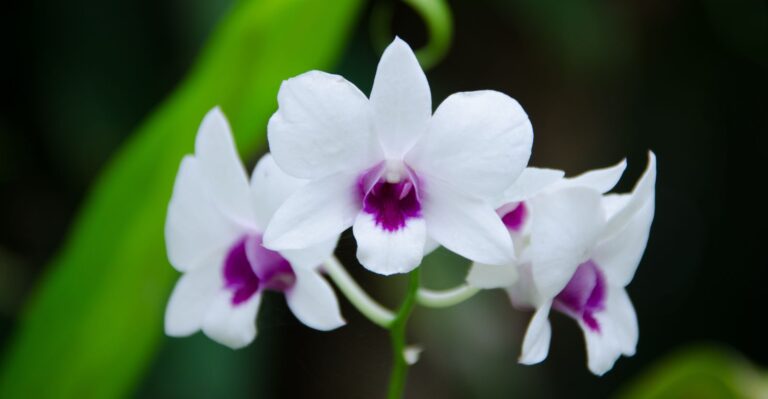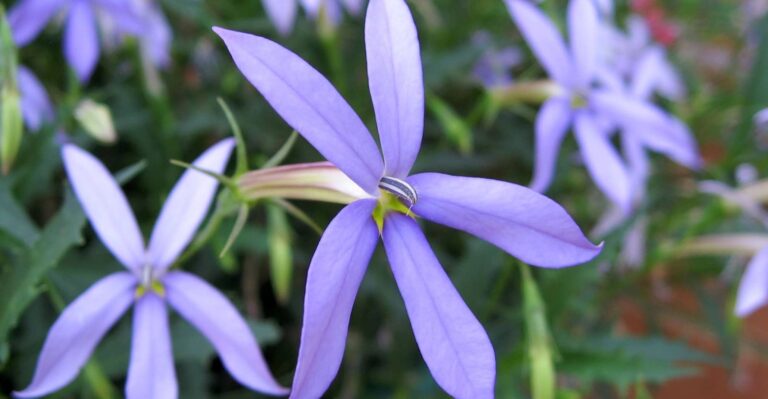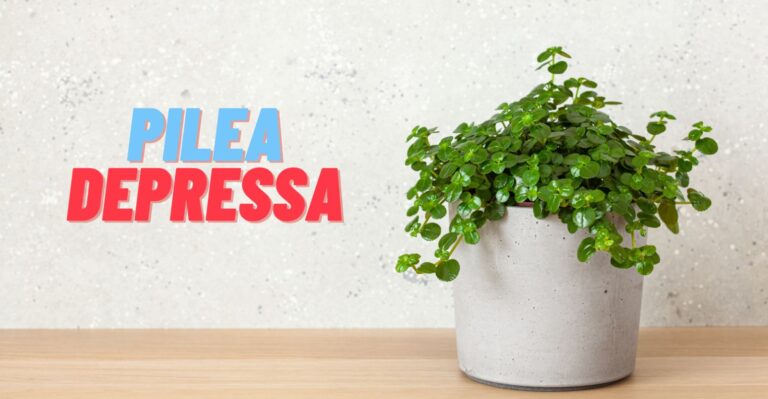Amazon has put together some great Home Gift Deals – save money and get your shopping done at the comfort of your home! Click here to see deals on Amazon
Cheflera (Schefflera) plants are attractive, low maintenance, drought-tolerant garden ornamental plants that may be grown indoors or outdoors. They bloom on and off throughout the year, making a beautiful addition to any landscape.
These fast-growing plants can grow up to 3 feet per year when planted outdoors. Schefflera actinophylla and Schefflera arboricola are the two most popular varieties. In this article, we have covered everything about Cheflera care and how to fix their most common problems.
Let’s get started.
What is Cheflera Plant?
The Cheflera or Schefflera plant is a type of evergreen perennial shrub that is native to the tropical regions of Asia. It has bright green leaves shaped like arrowheads. The leaves can also be red or white, depending on the species. With proper care, these long-lived plants can last up to 25 years or more.
It’s known for its attractive leaves and is easy to maintain in nature. This makes it a perfect indoor plant for homes and offices. It’s more popular as the “umbrella plant” or “octopus tree” due to its beautiful tentacles like flowers. Although it’s challenging to flower in cooler regions, they can produce lovely blooms in more temperate areas such as Florida and Southern California. La Chef grows best in the hardiness zones of 11–12.
How big do Schefflera plants get?
The Schefflera (umbrella tree) can grow up to 6 to 8 feet tall and spread 2–3 feet. This is a perfect choice for people who want to grow a plant that can be used as an indoor decoration. They’re also ideal for people who want to grow plants on their terraces. You can also grow them even bigger depending on how much time and care you give them.
A new species of Schefflera called Alpine Junior has dark green glossy foliage that grows up to 6 inches tall. New shoots emerge with a tint of red color that changes to dark green as the plant matures. It’s also believed to help with indoor air purification.
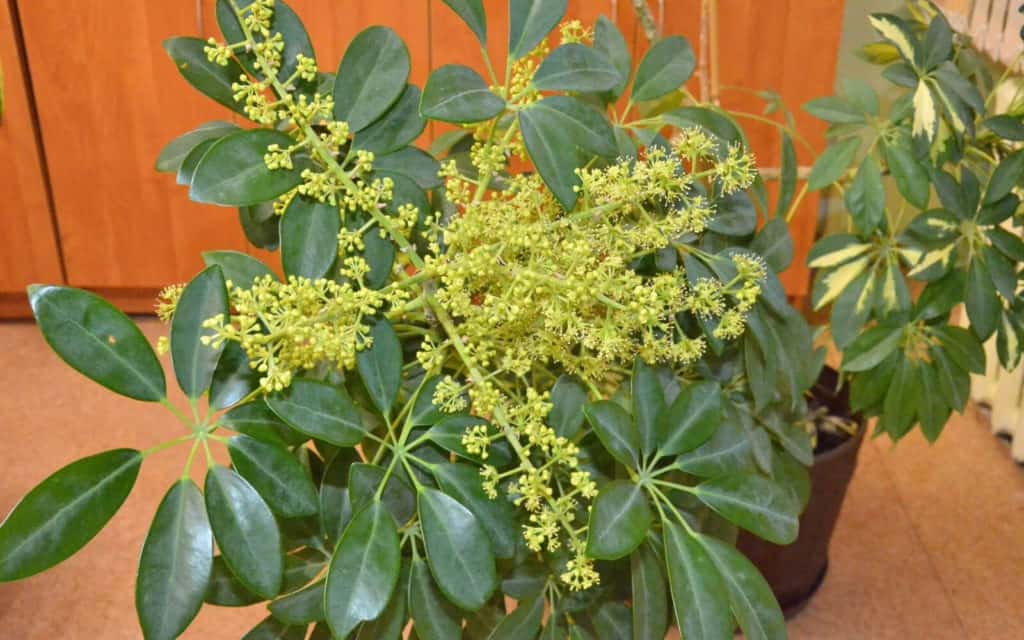
When does Cheflera bloom?
Cheflera blooms during the late spring to early summer. However, blooming happens when the conditions are suitable. Depending on the Cheflera species, the blooms can be white, red, or pink.
In the Schefflera actinophylla variety, popular among homeowners, the flowers are long and spiked, with several small flowers blooming along its length. These flowers are clustered at the branch end that look like the tentacles of an octopus. This is why they’re called “octopus trees.”

How to take care of the Cheflera plant?
The most significant appeal of the Cheflera plant is its low care requirement. You can quickly grow it in low-light conditions; perfect for growing as an indoor plant. When growing outdoors, you can plant it in a pot and leave it on the patio during summer but bring it indoors if the temperature falls below 55 F.
Cheflera plants grow best in full sun to partial shade and prefer slightly acidic soil with a pH between 6.5 and 7. They also require regular watering, but the more sun they get, the more water they need.
The soil should be well-drained, as waterlogged soil can cause root rot, making the plant susceptible to other diseases. When using a planter choose one that has drainage holes to let excess water pass.
If you’re planting it indoors, it’s best to provide it with bright light from a window or artificial light source. It’s recommended that the plant get at least eight hours of sunlight per day, but some strains may need more than that for optimal growth.
You should water your Schefflera (Cheflera) when the topsoil feels dry. You can tell by pressing your finger into the soil and seeing if there is any moisture left on your finger after you remove it from the potting mix.
When planting it outdoor, the soil for this plant should be rich in organic matter and well-drained. It’s best to use peat moss or pine bark as the main component of the soil mix.
Here is a care summary for the Cheflera plant:
Soil: Well-drained but moist soil
Water: Only when the top few inches of soil get dry
Light: Need bright but indirect light
Fertilizer: Half diluted water-soluble fertilizer in spring
Pest: Aphids, mealybugs, and spider mites (apply neem oil)
Why does the Schefflera plant lose leaves?
Schefflera (umbrella tree) is a tough plant that can survive low temperatures during the winter. It can be grown indoors year-round, but foliage typically loses color when temperatures dip below freezing in the winter months. This is natural and not much cause of concern as long as you don’t expose it to extreme temperature drops.
Leaves also fall off if they become dry or too old. It’s a natural process that happens to all plants, but it can be prevented by watering them regularly and providing them with the right amount of light.
How to restore Cheflera (Schefflera) plant losing leaves?
Believe it or not, many people harm their Cheflera by over-tending plant care. This usually happens by watering the plant more than needed. The common signs are the collapse of the plant starting from the trunk.
To restore the Schefflera plant that is losing leaves, you should first check the plant’s roots if the root looks healthy, clean or replace the pot and use fresh potting soil.
But if you see root rot symptoms, such as leaves turning yellow and branches dropping, it’s best to change to soil and remove any damaged roots. Your chance of reviving the plant will depend on the extent of the damage.
You should also strive to protect the Cheflera plant against natural stresses, such as cold spells, which can reduce the plant vigor. It’s best to bring it indoors when planted in a pot or wrap them to protect against the cold for the outdoor plant. Periodic deep watering in arid years will benefit the Schefflera.
Even healthy plant experience fluctuating levels of pest problems that affect the plant health and causes it to lose leaves. You shouldn’t panic when a pest makes its appearance. A small population of pests is tolerable and beneficial insects and spiders take care of pest problems without much intervention.
But when faced with several pest infestations, select the least harmful pest control methods by first using physical and biological controls. You can spot treat or confine treatment of toxic materials to just those areas where the pest problem is intolerable, rather than spraying the foliage of the entire plant.
You can also prune affected leaves to allow new leaves to replace them. For root rot, you can drench the soil with fungicide, and you may need repeated applications in the long term to manage the disease and place it where it can get bright indirect light.
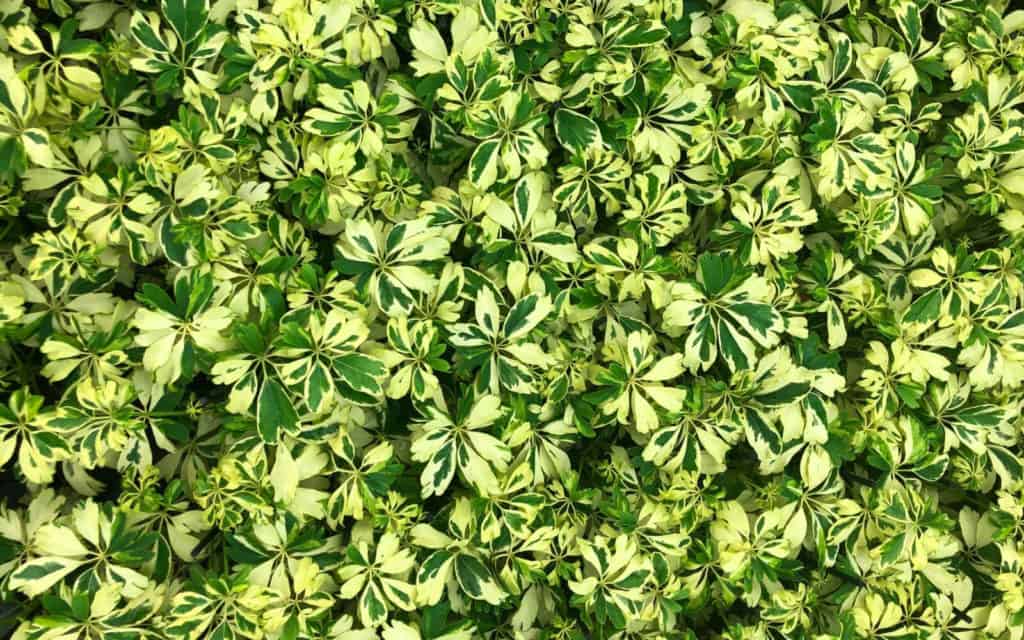
How to propagate Cheflera
Cutting is the best way to propagate Cheflera, and spring is the best time. Reproducing Cheflera is relatively simple and can be done either at home or in a greenhouse.
Step 1: Choose a healthy plant stem for propagation. Using a sterilizing pruner or cutting knife, make an angled cut above nodes.
Step 2: Ensure you have sufficient stem length (up to 8 inches) and remove all leaves except leaving a couple.
Step 3: Apply rooting hormone to the cut side and insert the cut-off section of the stem into the potting soil.
Step 4: Water it lightly and wrap a loose plastic bag to capture the humidity inside. Place the pot in bright indirect sunlight. Ensure the soil remains moist but not overly drenched in water.
Step 5: Keep an eye on the fungal or other problems in the soil. You can inspect if the roots are growing inside the ground. The new cutting should have developed a few good roots to sustain itself in a month.
Step 6: Remove the stem from the pot and plant it outdoor or replant it in a bigger pot.
Is Cheflera (Schefflera) toxic to cats?
Cheflera belongs to a genus of plants that are toxic to cats and other pets. The common signs are drooling, pawing at the mouth, oral pain, and refusing to eat food. Cheflra leaves contain insoluble calcium oxalate crystals that irritate the mouth or stomach.
In extreme cases, it may cause swelling of the respiratory system’s upper airways, making it difficult to breathe. You should take your pet to a veterinarian for proper care. Also, it’s mildly toxic to humans, so keep it away from the reach of children to prevent accidental chewing leaves.
Conclusion
In conclusion, Cheflera is a great plant that is remarkably resilient. It’s a great plant to have in your garden or indoors and will recover quickly from any series of aggressions.
It’s vital to remember this when considering whether to plant Cheflera in your garden, as it can be a beautiful and valuable addition to your landscape.
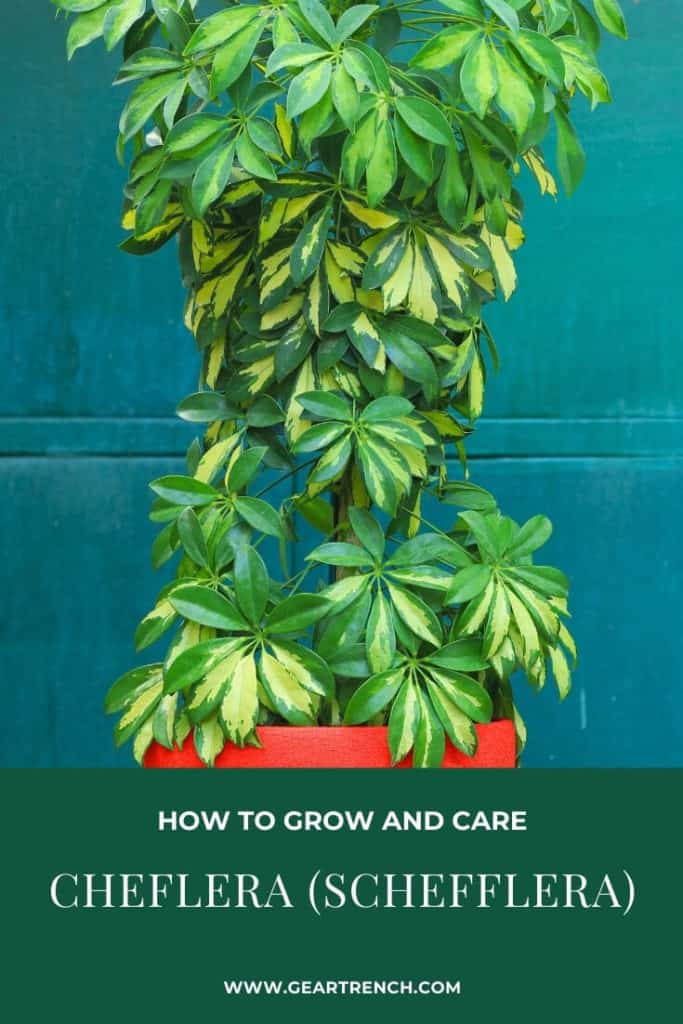
Don’t forget to share this post


